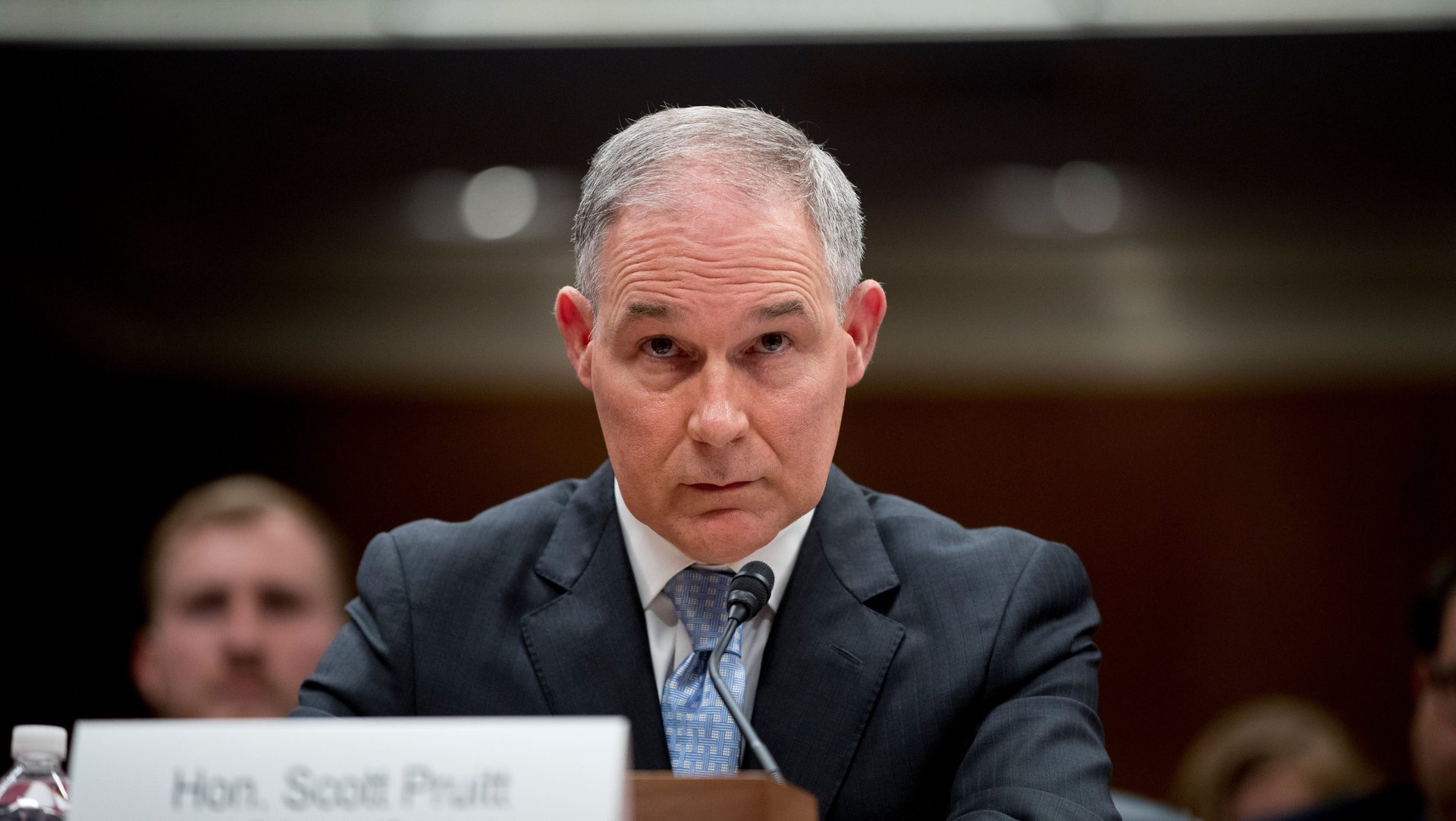Why doesn’t the US government want journalists to hear its findings on contaminated public water?
PFAS should be a household name by now. They’re a group chemicals likely contaminating the water supplies of tens of millions of people in the US.


PFAS should be a household name by now. They’re a group chemicals likely contaminating the water supplies of tens of millions of people in the US.
But the US Environmental Protection Agency, which is in charge of assessing and regulating drinking-water contaminants, isn’t letting reporters cover the most important event about PFAS the federal government has engaged in to date. The agency has, as a result, turned this week’s PFAS summit at EPA headquarters in Washington DC into a major national news story about freedom of the press. But the implications have a direct impact on human health: The summit was meant to be an attempt to assess whether, and how much, the chemicals should be regulated.
Press wasn’t allowed in when the event started on May 22. At some point later that day, EPA staffers, likely responding to the outcry by journalists on Twitter, allowed a few members of the press into the room. But it barred several news organizations from entering, including CNN, The Associated Press, and environmental news outlet E&E News.
When an AP reporter asked to speak to an EPA staffer after being turned away, security guards “grabbed the reporter by the shoulders and shoved her forcibly out of the EPA building,” the AP reported.
Today (May 23), on the second day of the summit, the EPA again didn’t allow press to enter.
At this point, most people in the US have been exposed to chemicals in the PFAS family, especially PFOA (perfluorooctanoic acid, an ingredient in Teflon, the chemical used to make non-stick cookware) and PFOS (perfluorooctane sulfonate, often used as a firefighting foam, especially at airports and on military bases). PFAS chemicals have been linked to a range of health risks including cancer, immune system issues, and developmental problems in fetuses. Towns and cities in West Virginia, New York, Michigan, and several other US states have already dealt with major water-contamination emergencies from the chemicals.
This is the latest news to arise of the federal agency dodging media and expert coverage of the chemicals. In January, EPA and White House staffers attempted to block publication of a federal study that showed PFAS could harm human health at exposure levels far below EPA recommended thresholds, because the government felt it would cause a “public relations nightmare,” Politico reported earlier this month.
“The public, media, and Congressional reaction to these numbers is going to be huge,” one unidentified White House aide said in an email forwarded to another federal staffer on Jan. 30, and later obtained by Politico. “The impact to EPA and [the Department of Defense] is going to be extremely painful.”
The staffer was likely referring to the defense department because PFOS is used to make a firefighting foam widely used on military bases. Water supplies near military bases across the country have been found to be highly contaminated with PFOS.
“The National Leadership Summit on PFAS scheduled is not a federal advisory committee event [sic],” EPA spokesman Jahan Wilcox said in an emailed statement to Politico and other outlets. “The purpose of this event is for EPA’s state, tribal, and federal government partners and national organizations to share a range of individual perspectives on the Agency’s actions to date and path forward on [the chemicals]. The Agency looks forward to hearing from all stakeholders on these crucial issues.”
The EPA released a video of EPA administrator Scott Pruitt’s opening remarks from the first day of the summit after reporters asked for it on Tuesday (May 22):
The Society of Environmental Journalists, the largest professional organization of reporters and editors covering the environment, sent a letter to Pruitt’s office condemning the behavior as “completely unacceptable”:
It beggars understanding that the EPA would prevent any reporters from covering a topic of such intense nationwide interest and concern. But these are just the latest additions to your pattern of antagonism toward the press, and disregard for the public’s right to know what EPA is or is not doing to protect their health and the environment.
Pruitt is the latest EPA administrator to take up the PFAS mantle; the agency has been toying with the idea of regulating PFAS for years, since at least 2013. But it takes a lot to convince the EPA to limit how much of a toxin can legally show up in America’s drinking water. The threshold for determining probable human harm is very high, and even if harm is detected, the toxin has to show up in enough public water sources with enough frequency, and at levels sufficiently high, before the EPA considers it significant enough to regulate.
And even after all the exhaustive studies are done, the decision ultimately comes down to “the sole judgment of the Administrator,” the head of the agency—Pruitt, in the current administration—who may or may not be swayed by the data. The agency hasn’t added a new chemical to the regulated list since 1996.
The EPA’s official estimate is that PFOA is in about 1% of US water supplies. But the same lab that helped the EPA reach that number did a reanalysis of the underlying data and found the real number is more likely in the 20% range. And about 28% of water supplies are contaminated with some member of the perflourinated compound family.